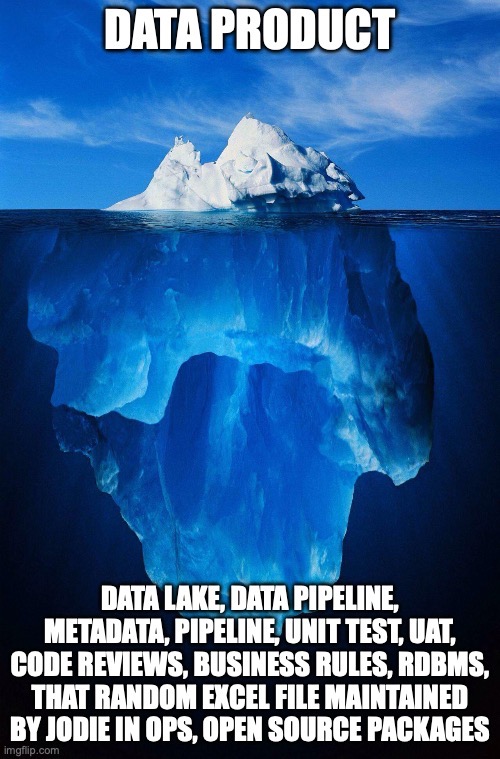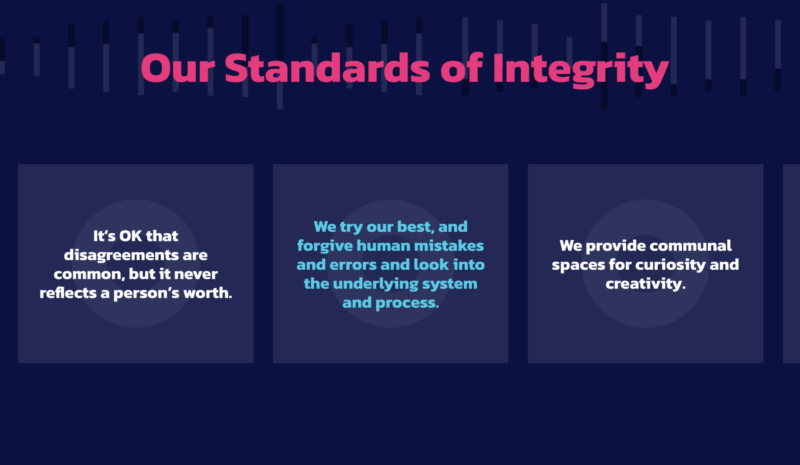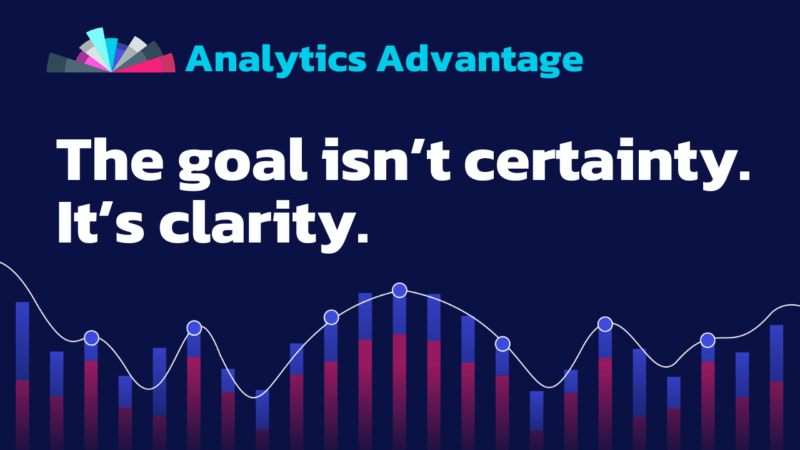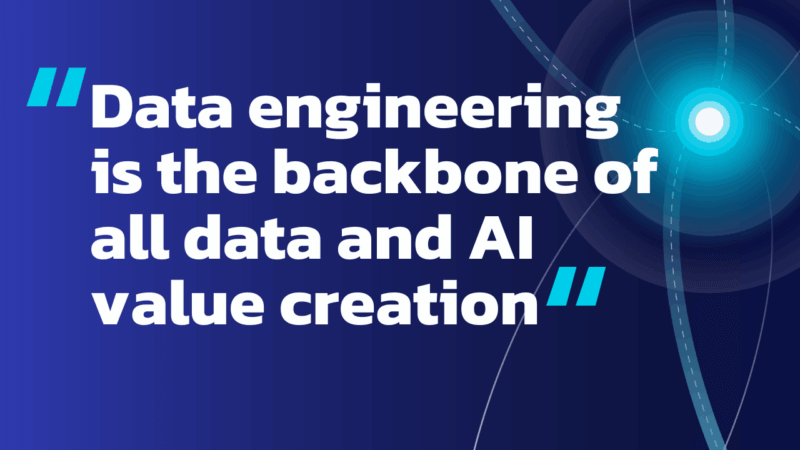
Newsletters
So What? When Your Product Doesn’t Matter
Analytics Advantage is a weekly newsletter of actionable insights, proven strategies, and top tips for getting the most from your data and making high-stakes decisions with confidence. Here’s a recent sample. We hope you’ll subscribe.
***
What are some of the worst words you can hear after your team presents a new data product that was a drop-everything priority for your customer?:
“So what?”
The customer never circles back. Why? Because the product didn’t drive action. It didn’t tell them anything they didn’t already know.
There are two common scenarios that cause such a response:
- Publish or Perish
- Order Takers
Both are thanks to a leadership breakdown somewhere along the line.
There are valid reasons why both of these conditions happen, but in the words of that wise molluscan sage, Admiral Ackbar:

This is the “So What?” Trap.
Let’s unpack “Publish or Perish” and “Order Takers” and I’ll share my strategies for real, lasting change to help you avoid the “So What?” Trap
The Conditions That Lead to “So What?”
Your customer does not understand the effort needed to answer their questions. If they did, they would be able to produce their own data products and wouldn’t need you and your team.

It’s your job to partner with them to craft their questions into something which can be answered within a reasonable amount of time and with the data you have or can acquire.
Publish or Perish
The phrase “Publish or Perish” is borrowed from higher education. The view within educational organizations is that professors, before they achieve tenure, must produce frequent research papers or lose their position in line for tenure.
Here’s how this plays out for data teams like yours.
Imagine a client who constantly pushes for content and shifts priorities. You’re stuck in a loop where every request is an urgent “yesterday” priority.
The team focuses on the urgent priority and delivers it within two days. Major win! The new product delivers insights which enables top-line growth. No sooner is it delivered and the client says, “That’s fascinating. But, I’ve got a new idea that I’d like you to get going on right away.”
In organizations like this, data teams are perpetually behind the eight ball, stuck in a loop of producing insights that are behind schedule (and are often overlooked and undervalued once delivered). The teams have to produce a steady stream of content or their worth is questioned.
It’s not fair, but too often, it’s the reality.
The root cause of Publish or Perish has several common traits. The data team’s leader has performance metrics tied to new products created. The customer is unaffected (budget or time-wise) by sending over any and all ideas to your team. There’s a lack of attribution for the data teams role in enabling growth or efficiency.
At the core, a leader didn’t do their job or understand the impact of these decisions.
Order Takers
A second common cause leading to the “So What?” trap is turning the data team into Order Takers – cutting out the one-to-one collaboration between business and data teams. A leader in the organization often has this thought “The data team isn’t giving us what we need. We need to cut down the back and forth and enable the business to drive the decisions.”
When the data teams are reduced to Order Takers, they focus purely on building everything and anything the business teams want. Developers are handed a cold, lifeless sheet of information and told to make it. Don’t deviate, don’t ask questions; we don’t have time for that, that’s not your job. The quantity of data products goes up, but quality plummets. Developers start looking for other jobs. The value of the data team to the business plummets. Data products become a commodity, not a change agent. Many times, the data function is outsourced and near or offshored.
The roots of this come from a malfunctioning design process. Somewhere along the way, the customers who see the problem and developers got separated. It became a game of Telephone being played between managers. Instead of having face-to-face time between customers and the people creating the data product, someone decided they should just use a form. The managers told the developers to just build whatever the customer asks for…
Strategies for Real, Lasting Change
To escape the “So What?” Trap, data teams must move from reactive delivery to strategic partnership. This means redefining success, not by the number of reports churned out, but by the impact those insights have on business decisions. When teams prioritize meaningful collaboration and purpose-built data models, they can shift from simply answering requests to shaping the right questions in the first place.
Blame the System, Not the Person
At Action, part of our Ethos is: “We try our best, and forgive human mistakes and errors and look into the underlying system and process.”

Instead of blaming the Order Takers for doing what they were told to do, we look to the system and circumstances within the organization. Why did the data team feel it was better to prioritize quantity over quality? Is the team lead paid a bonus if they hit a certain number of products released each year? Why is the value of the data team measured by the number of things they produce and not the outcomes they help create?
Actionauts (what we call the employees at Action) practice this ethos of looking at the underlying system as we partner with our clients to turn data into action.
Invest in Purpose-Built Data
Rare is the data team that has 100% control over their data lineage. With an organization’s growth comes increased specialization. Onboarding a new data platform requires at least three VPs to say “Yes.”
Purpose-built data is exactly what it sounds like. Work directly with your customer to understand the range of questions and needs they have. Patterns will emerge. Design your data model(s) to address the largest growth and efficiency targets. Work your way down the remaining items in order of audience size, audience authority, and frequency. Purpose-built data ecosystems don’t just accept whatever they’re given and “make it work.” They build their own model of the business and tailor the incoming data to fit it.
With a purpose-built data ecosystem, your team can spend more time working directly with the business to fine tune their data products. Not just taking orders or taking too long on a product and suffering the consequences.
Collaborate
Purpose-built data ecosystems also create room for your team to have a more meaningful collaboration within the business. They get the time to sit and listen to the thinking process of their customers. They can do true user research. Even if it’s painful.
From Order Takers to Impact-Makers
Turning “So what?” into “Wow! This is going to change how we work” requires more than just technical prowess—it demands real leadership.
By building purpose-driven data ecosystems and fostering genuine collaboration, data teams can create meaningful insights that drive real, lasting change. When data teams partner with the business and focus on quality over quantity, they move beyond order takers to become indispensable agents of change.
Shaun Davis, your personal data therapist, understands your unique challenges and helps you navigate through the data maze. With keen insight, he discerns the signal from the noise, tenaciously finding the right solutions to guide you through the ever-growing data landscape. Shaun has partnered for 10 years with top data teams to turn their data into profitable and efficiency hunting action. Learn more about Shaun.





